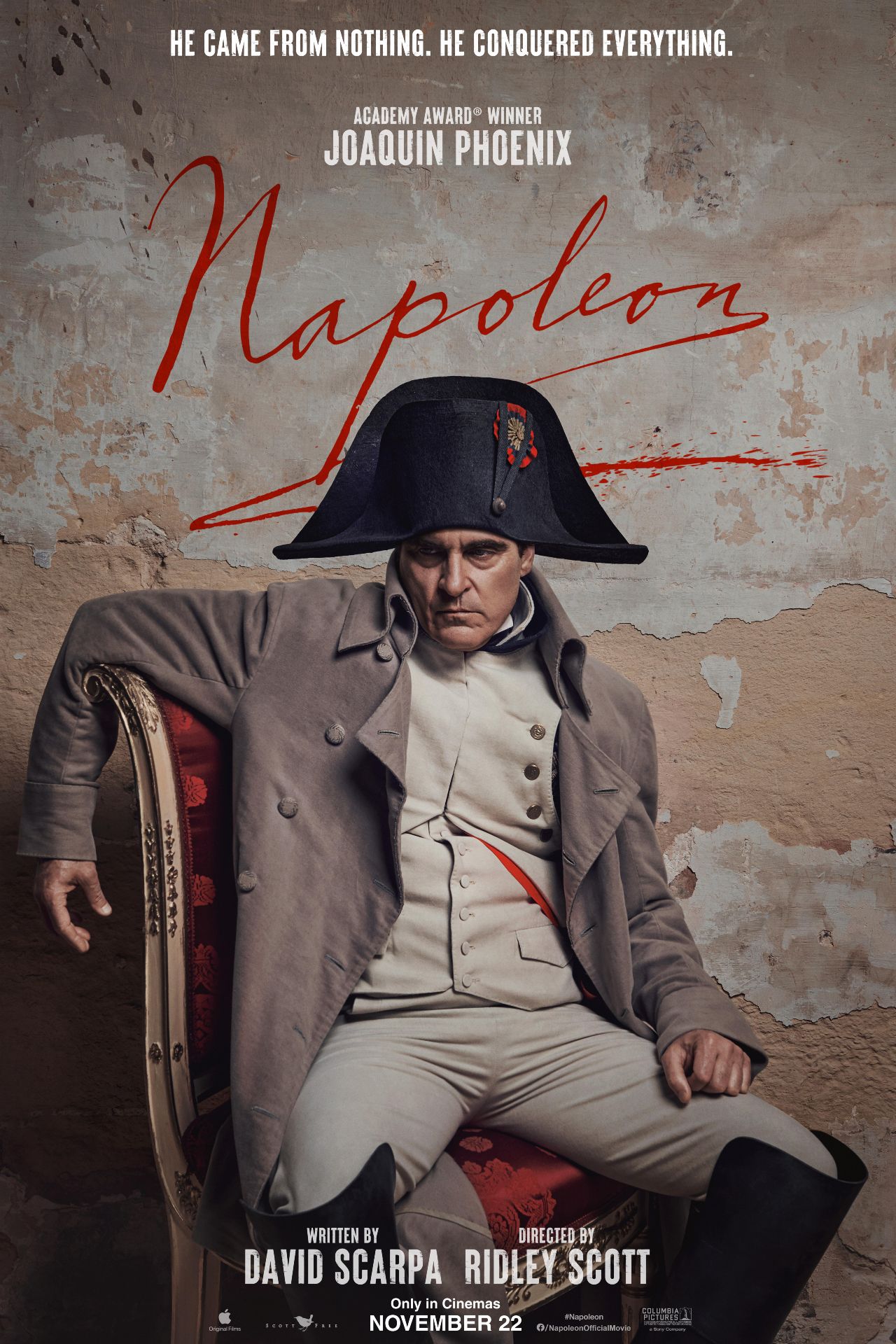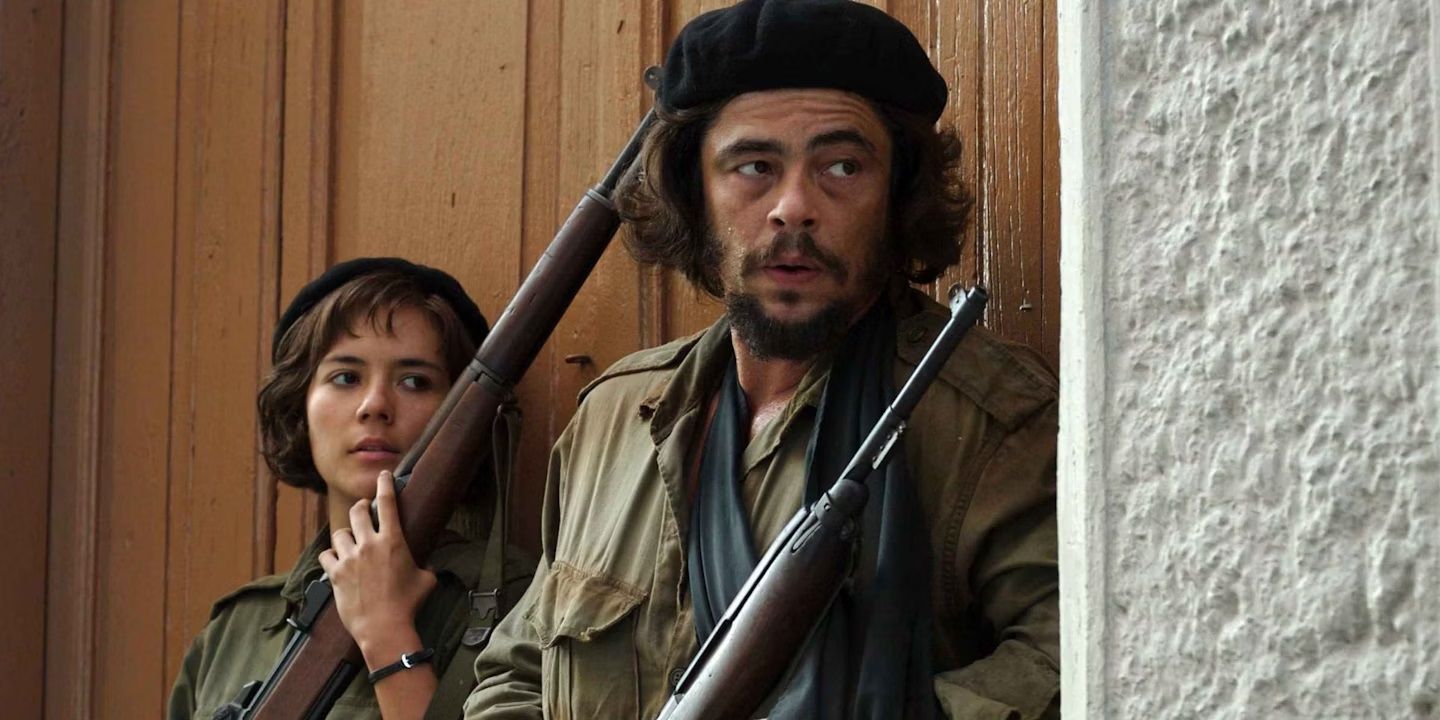Summary
- Splitting Napoleon into two parts could have added depth to his character and explored his motivations in a more meaningful way.
- By cramming Napoleon’s life into one movie, Ridley Scott missed the opportunity to fully flesh out key historical events and character development.
- Following the precedent of biopics like Che, a two-part Napoleon movie could have provided a more comprehensive and engaging storytelling experience.
Ridley Scott’s Napoleon was way too big for just one movie, and if it had been split into two parts, it could’ve redeemed Hollywood’s most tiring recent trend. Napoleon covers Napoleon Bonaparte’s life from his humble beginnings as an ambitious young army officer in 1793 to his unceremonious death in 1821. David Scarpa’s script simply had too much ground to cover. He had to skip years at a time to get through the entire history in a two-and-a-half-hour runtime and ended up glossing over a lot of key historical events that deserved to be fleshed out more.
By cramming Napoleon’s rise and fall into a single movie, Scott ended up delivering a biopic with no depth. It checks off all the major victories that earned Napoleon’s reputation as a ruthless warmonger, but it leaves no room to explore his motivations. The movie tells its audience that Napoleon was relentlessly ambitious, but it doesn’t explain why. If Scott had ditched the single-movie approach and embraced Hollywood’s annoying dollar-stretching trend of two-part movies, then he would’ve had time to explore Napoleon’s rise and fall in the depth it warrants.
Napoleon Could Have Been A Great ‘Part One’ & ‘Part Two’ Movie
With the first half of its story charting the French emperor’s rise to power and the second half chronicling his fall and eventual death, Napoleon would’ve been a great “Part One”/“Part Two” movie. The first part could’ve taken Napoleon from his ambitious beginnings up to his coronation, then the second part could’ve followed the fall of his empire. Splitting movies into two parts has become an irritating trend in Hollywood in recent years. The movie adaptation of Wicked is being split into two parts and Fast X was announced as the first part of a two-parter (and later a trilogy).
Mission: Impossible – Dead Reckoning Part One went down so poorly that the “Part One” has been stricken from its title in its home release. Usually, these two-part movie splits are just a way for Hollywood studios to double their profits by forcing audiences to buy two tickets for one story (The Twilight Saga: Breaking Dawn, The Hunger Games: Mockingjay, Harry Potter and the Deathly Hallows, etc.). But sometimes, a story is so massive that it demands to be told in multiple parts. Dune and the Spider-Verse sequels fall into that category, and so does Napoleon.
Napoleon
is streaming now on Apple TV+.
Splitting Napoleon Up Would Have Fixed Its Biggest Problems
Narratively, it makes sense to split Napoleon into two parts. The story is told in two halves – the rise followed by the fall – and telling that story in two parts would emphasize its duality. Scott already teased that there’s a four-hour director’s cut of Napoleon on the way. If he’d split Napoleon into two movies, he wouldn’t have had to slash the film down to a two-and-a-half-hour cut for theatrical release; he could’ve kept all four hours of his original version. It would’ve fixed a lot of the movie’s biggest problems, too, since most criticisms revolved around the film’s length.
The negative reviews of Napoleon felt that its character development lacked depth. It had to race through so many crucial historical events and major military conflicts that it had no room to dig deep into Napoleon’s psychology. The movie plays more like a Wikipedia page with all the historical bullet points and none of the humanity. It doesn’t explain why Napoleon was the way he was, or what drove him to be such an aggressive warmonger. If the movie had been split into two parts, Scott would’ve had plenty of time to explore these elements.
Napoleon Could Have Followed A 16-Year-Old Precedent
There’s a great precedent for splitting Napoleon into two parts. It wouldn’t have been the first biopic of a historical figure to chronicle its subject’s rise and fall in two separate movies. In 2008, Steven Soderbergh directed a biopic of Che Guevara in two parts: Che: Part One – The Argentine and Che: Part Two – Guerrilla. Telling Guevara’s story across two movies allowed Soderbergh to really sink his teeth into the history. Benicio del Toro had the space to create a three-dimensional character and give the audience an idea of what kind of person Guevara was.
The first part of Che focuses on the Cuban Revolution and the toppling of Fulgencio Batista’s regime, while the second part focuses on Guevara’s attempts to bring revolution to Bolivia. By splitting the story into two parts, Soderbergh freed himself from having to balance these two significant events within the same two-hour runtime and allowed him to focus on each one individually. The best way to tackle Napoleon would’ve been to take a similar two-part approach.

Napoleon
From director Ridley Scott and writer David Scarpa comes Napoleon, a dramatic historical-epic film that follows the rise of Napoleon Bonaparte as he embarks on a lengthy French campaign of conquest. The film also focuses on his relationship with Josephine, his Empress and the love of his life, a relationship that was equal parts romantically intense and self-destructive.

